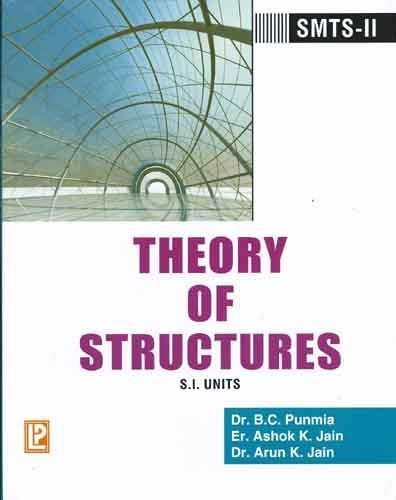
[PDF] A Textbook of Strength of Materials By Dr.R.K.Bansal Book Free Download
All the chapters of this book, "A Textbook of Strength of Materials" have been written by Dr.R.K.Bansal in such a simple and easy-to-follow language such that even an average student can understand easily by self-study. This book consists of topics such as Simple stresses and strains, Principal stresses and strains, Strain energy, Centre of Gravity, Shear Force, Bending moment, Deflection of Beams, Retaining wall and Dams, Torsion, Thin cylinders and Thick cylinders, Columns and Struts, Riveted and welded joints and many more. Apart from these, huge number of objective type questions which have been asked in most competitive examinations like Engineering Services Examination, GATE, IES, etc were included in this book along with clear cut explanation of their solutions.
This edition has been thoroughly revised and made up-to-date. A large number of numerical problems from different B.E. degree examinations have been added with solution at proper places. At the end of each chapter, highlights, theoretical questions and many unsolved numerical problems with answers have been given for the students to practice them. Three advanced topics-stresses due to rotation in thin and thick cylinders, bending of curved bars and theories of failure of the materials have also been added. These chapters have been written in such a simple and easy-to-follow language that even an average student can understand them easily by self-study. A large number of Objective Type Multiple Choice Questions, asked in the most of the competitive examinations, have been incorporated in this edition with answers and explanations to make this edition more useful for competitive examinations

Download Strength Of Materials Books - We have compiled a list of Best & Standard Reference Books on Strength of materials Subject. These books are used by students of top universities, institutes and colleges. Strength of materials, also called mechanics of materials, is a subject which deals with the behavior of solid objects subject to stresses and strains. The complete theory began with the consideration of the behavior of one and two dimensional members of structures, whose states of stress can be approximated as two dimensional, and was then generalized to three dimensions to develop a more complete theory of the elastic and plastic behavior of materials. An important founding pioneer in mechanics of materials was Stephen Timoshenko.
The study of strength of materials often refers to various methods of calculating the stresses and strains in structural members, such as beams, columns, and shafts. The methods employed to predict the response of a structure under loading and its susceptibility to various failure modes takes into account the properties of the materials such as its yield strength, ultimate strength, Young's modulus, and Poisson's ratio; in addition the mechanical elements macroscopic properties (geometric properties), such as its length, width, thickness, boundary constraints and abrupt changes in geometry such as holes are considered.
1212121

Download Strength Of Materials Books - We have compiled a list of Best & Standard Reference Books on Strength of materials Subject. These books are used by students of top universities, institutes and colleges. Strength of materials, also called mechanics of materials, is a subject which deals with the behavior of solid objects subject to stresses and strains. The complete theory began with the consideration of the behavior of one and two dimensional members of structures, whose states of stress can be approximated as two dimensional, and was then generalized to three dimensions to develop a more complete theory of the elastic and plastic behavior of materials. An important founding pioneer in mechanics of materials was Stephen Timoshenko.
The study of strength of materials often refers to various methods of calculating the stresses and strains in structural members, such as beams, columns, and shafts. The methods employed to predict the response of a structure under loading and its susceptibility to various failure modes takes into account the properties of the materials such as its yield strength, ultimate strength, Young's modulus, and Poisson's ratio; in addition the mechanical elements macroscopic properties (geometric properties), such as its length, width, thickness, boundary constraints and abrupt changes in geometry such as holes are considered.
